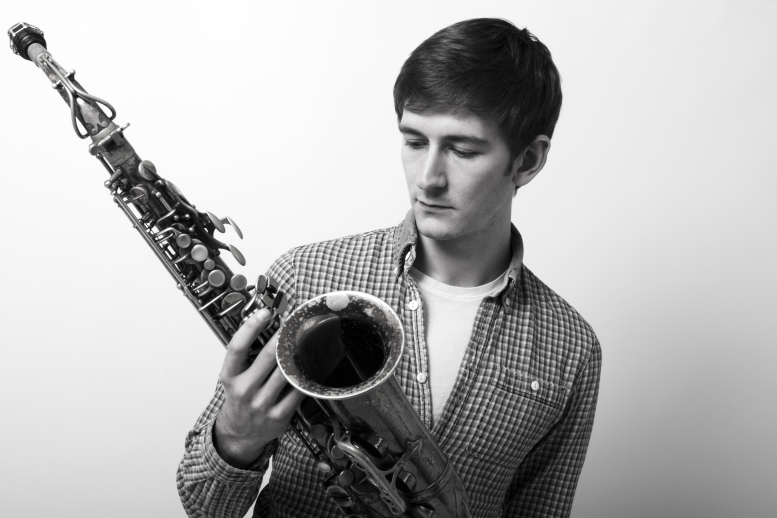The Crux
Influences - Opeth, Gustav Holst
A huge part of my musical upbringing was grounded in Progressive Rock and Metal music, and until this point they had not surfaced to a major degree in my quintet writing. This may have been due to being afraid that it wasn’t ‘jazzy’ enough, or perhaps I didn’t have the experience to create something of similar power in a acoustic quintet setting.
A - The first head actually began life as a twisted circus-style waltz that I wrote whilst waiting for a student to turn up at school. The last eight bars of harmony in the first theme provide lighter relief from the darker edges of previous chords, and although the head now has lost its former black-comedy humour, I feel that these eight bars at least still provide a grin!
B - A piano solo interlude clears the air, bringing the intensity down. The first theme and its regular anticipations are both reflected and developed here by the piano ostinato and the melody in the sax and guitar. As the anticipations become more regular and the dynamic increases, a sense of tension is built up with help from increasing activity in the drums.
C - Piano and guitar keep an Gb held over a four-chord vamp based around Ab as the groove evolves into a slow, heavy three-feel. The Gb then stays held as the harmony shifts around, resolving momentarily in one bar before returning back to Gb as the sax enters (D) with a short melodic statement. The 5ths in the piano and bass are both inspired by the power chords that are commonplace in rock music and also by a session I had with Nikki Iles. She brought in a tune that was full of ‘5’ chords, and it was eye-opening to see how jazz language really struggled to fit within the simpler and more brash harmony.
E -The piano solo starts over a two-chord vamp that has a repeatedly unresolved dominant chord. This releases on cue into (F) a new cadence to further delay any harmonic release. The 8 bar sequence here is inspired by the Swedish progressive-metal band, Opeth, and their song ‘Dirge for November’. I enjoy its bleakness and simplicity. It uses fairly standard harmony, and I find it reminiscent of Baroque sequences, thus challenges the improviser into straying from common ‘language’.
The piano and sax take turns to improvise over this sequence in new keys, though always returning to the four-bar riff based in Ab before handing the baton over. Once the cue is given to leave the improvising section, the C and D sections are played again.
To finish the piece with a bang, I wanted to give the drums a chance to let loose a bit! A new riff enters in the same time signature but is written in a way that allows the drummer to imply new time signatures if he/she should wish. The first half of the riff is inspired by a melodic idea from Shostakovich’s 5th Symphony and the second half refers back to the harmony in letter C. It all comes to a close in the key of B, and I chose a classic John Petrucci guitar voicing with the 5th in the bass to give it a dark, heavy sound.

